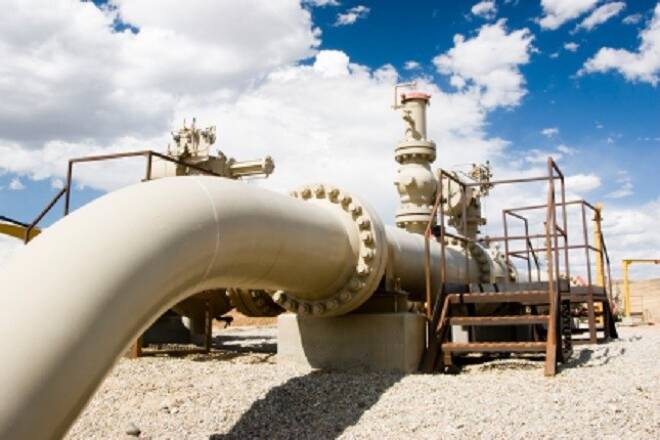Advertisement
Advertisement
Natural Gas Price Prediction – Prices Surge to Fresh 2-year Highs
By:
Natural gas prices surged higher closing up 7%, blowing through the $4.0 handle. Colder than normal weather is expected to cover most of the United States
Natural gas prices surged higher closing up 7%, blowing through the $4.0 handle. Colder than normal weather is expected to cover most of the United States for the next 6-10 days but then ease and turn warmer during the latter part of November. Inventories remain well below the 5-year average range which could continue to put upward pressure on prices. Demand is flat but expected to rise next week as supply dipped by approximately 1%.
Technical Analysis
Natural gas prices broke out surging through the $4.0. and making a fresh 2-year high. Prices made a higher high and a higher low which is a sign of an uptrend. Positive momentum re-accelerated as the MACD (moving average convergence divergence) histogram is printing in the black with an upward sloping trajectory which points to higher prices. The relative strength index (RSI) moved higher with price action which reflects accelerating positive momentum. The current reading on the RSI is 84, which is above the overbought trigger level and could foreshadow a correction.
Injections Last Week Rose compared to the 5-year Average of Injections
Net injections are higher than the five-year average. Net injections into storage totaled 65 Bcf for the week ending November 2, compared with the five-year average net injections of 48 Bcf and last year’s net injections of 22 Bcf during the same week. Working gas stocks totaled 3,208 Bcf, which is 621 Bcf lower than the five-year average and 580 Bcf lower than last year at this time.
While working gas stocks’ deficit to the five-year average decreases, the deficit to the bottom of the five-year range increases. In the Lower 48 states, total working gas stocks are collectively 374 Bcf lower than the five-year minimum, and every storage region is currently lower than the bottom of the five-year range. The deficit to the bottom of the range increased in the Midwest region and the South Central region. As of this report week, the Midwest region is 73 Bcf lower than the five-year minimum, and the South Central region, including both salt and non-salt facilities, is 150 Bcf lower than the five-year minimum.
About the Author
David Beckerauthor
David Becker focuses his attention on various consulting and portfolio management activities at Fortuity LLC, where he currently provides oversight for a multimillion-dollar portfolio consisting of commodities, debt, equities, real estate, and more.
Did you find this article useful?
Latest news and analysis
Advertisement
